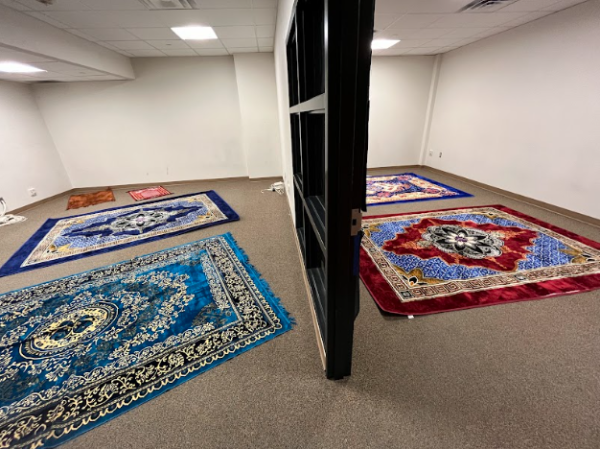Fast fashion’s impact on environment
Good ways to shop sustainably
Junior Santiago Cabral walks down the hallway to biology Nov. 3. Fashion is a way for students to express themselves in school.
November 10, 2022
Online shopping at stores like Shein and Romwe has skyrocketed since the beginning of the pandemic.
As the holidays come up, many people turn to online shopping to get affordable and fast presents. This makes Shein and other online stores’ orders skyrocket. This causes damage to the environment.
Co-president of the Environmental club and sophomore Abigail Oppegaard said she is very passionate about the environmental impact of fast fashion.
“Fast fashion is really awful for the environment because the clothes are all made of synthetic materials which are not biodegradable. They release microplastics every time they’re washed,” Oppegaard said. “They are made to last as long as the trend lasts, which in our day and age is a week to a month at max. When people are done with the clothes they’re not good enough to give them away or keep wearing them because they’ve already fallen apart.”
Sophomore Catie Miller said the products Shein uses to manufacture their clothes will rarely decompose.
“Many companies that contribute to fast fashion make their fabrics out of plastic which don’t decompose, so they’re sitting on the earth forever,” Miller said.
Oppegard said some of the reasons fast fashion use skyrockets during the holidays is easy access and plentiful options.
“There’s some places like Shein and Romwe (which) have so many options, so anything you’re looking for you find,” Oppegaard said. “You don’t have to go through the trouble of searching through stores and trying things on, and everything is just so cheap. It’s very disposable, so people don’t feel like they have to worry about something not fitting or not being perfect because it’s not expensive.”
According to Miller, although fast fashion is a growing problem in the world, there are ways you get the most out of your clothes. Miller said the newest trend is thrifting, which not only helps the environment but can help you create a personal style that makes you feel confident in your own skin — something every teenager needs to experience.
“Thrifting clothing is one of the most environmentally friendly ways to shop, and being able to repurpose clothing is good for the environment,” Miller said. “Being able to not only help the environment by making sure clothes don’t go into landfills but also feeling confident and happy in yourself (is important).”
Former Intro to Fashion Marketing teacher, Nick Hayes, said fast fashion is unfortunately becoming a trend in the fashion world.
“It seems like it’s growing by the day and by the year,” Hayes said. “You see more and more companies taking that approach to create clothing and then get it out as fast as they can.”
According to Oppegaard, it’s important to know that even though you are only one person, students can still make a difference and impact the environment positively.
“We all perpetuate and contribute to the ideas of society and whether or not throw-away-societies are okay, we should all do our part to stop being a part of that. Shop sustainably if you can,” Oppegaard said.
According to Hayes, fast fashion companies are very similar to sweatshops which abuse their employees for less money, longer hours and awful conditions.
“I think there are a lot of correlations between (sweatshops and fast fashion). Companies (are) outsourcing (how they make) their products. So in smaller less developed countries where employees need jobs and these companies are taking advantage of their need for jobs by paying them well below what would be considered minimum wage in America.”














